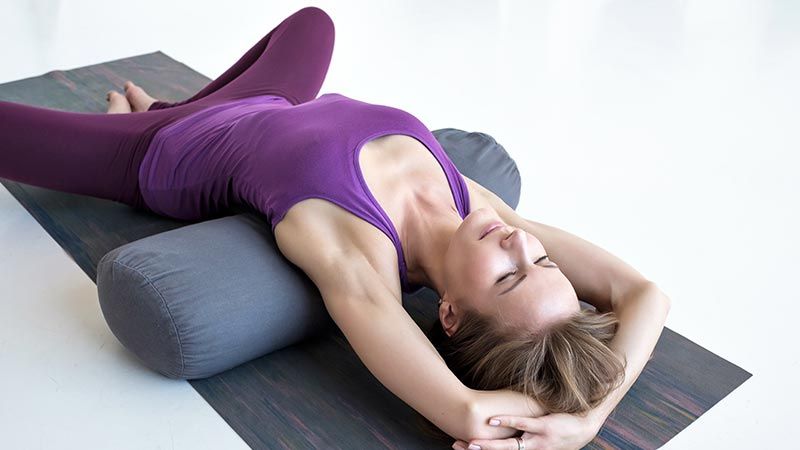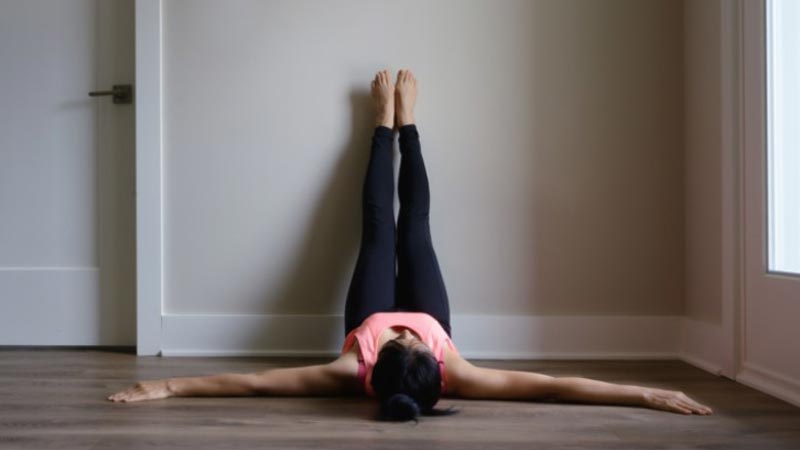Importance of Yoga in Cancer Treatment
11 months ago
5 minute read.

A cancer diagnosis can cripple all aspects of a patient's life, particularly their mental health. Implementing self-care and relaxation into their routines while maintaining a busy schedule of treatment and the demands of their own lives is critical for cancer patients.
Cancer patients who practice yoga on a regular basis report that their quality of life and the complications of their emotional and physical states have significantly improved. Yoga can help manage physical symptoms and side effects of treatment while also reducing psychological stress caused by a diagnosis.
According to World Health Organization reports, approximately 1.38 million cancer cases are diagnosed each year. This suggests that the number of cancer-related cases worldwide is increasing, which can be attributed to a variety of factors such as COVID-19 an unhealthy lifestyle, obesity, and a lack of exercise and a nutritious diet.
[ Related: Physical Activity And Cancer Prevention: The Whats, Whys, And Hows]
Yoga can benefit cancer patients both mentally and physically. While yoga cannot cure cancer, it can help to alleviate some of the side effects of the disease and its treatments. According to some studies, yoga may:
- Ease cancer-related fatigue
- Improve sleep
- Help with recovery from cancer surgery
- Reduce depression, anxiety, and distress
Yoga is a mind-body technique that has always been believed to help lower stress and increase flexibility.
Psychological And Emotional Impact
Following a cancer diagnosis, many people experience increased anxiety and depression. Sleeping difficulties, fatigue, inability to focus, and increased negative thought patterns are some of the symptoms. Yoga has been shown to reduce psychological distress, including anxiety and depression symptoms. It can be difficult for cancer patients to keep their minds from wandering, dwelling on the past, or worrying about the future.
Meditation and deep breathing Techniques allow them to clear their minds and focus on their breath, which helps them to ground themselves and focus on the present. Yoga promotes self-regulation and awareness, making it easier for patients to deal with stressful situations. These abilities come in handy when dealing with the numerous stressors that come with a cancer diagnosis.
Advanced Full Body Check With Cancer Marker - Recommended For Women
According to one study, yoga may have some positive effects on psychological well-being in cancer patients. Other research has found that yoga can help people with breast cancer reduce fatigue and depression. A small study of men with prostate cancer found that regular yoga practice improved their quality of life and general well-being.
Why People with Cancer Use Yoga?
One of the main reasons that people with cancer use yoga, as with many other types of complementary therapy, is that it makes them feel good.
Yoga instructors promote it as a natural way to relieve stress, anxiety, and depression. In general, it can help to improve your mood and well-being. Yoga can sometimes help you move more quickly and easily after cancer surgery.
What It Involves?
Yoga sessions often last around 60 and 90 minutes. You can take group classes or see a private instructor. What it involves will vary depending on the type of yoga you practice. However, you will usually do a series of postures and breath work, followed by some relaxation time.
Wear clothing that allows you to move and stretch freely. A non-slip mat is usually required. You should only practice yoga at home after you have learned how to do the postures safely and correctly. If you don't do them correctly, you could injure yourself.
Also Check: Foods That Can Increase Your Chance Of Getting Cancer
Side Effects And Precautions
Yoga is generally very safe if done correctly and under the supervision of a qualified teacher. Take the safety precautions listed below.
- Allow at least 2 hours after eating before practicing yoga.
- Do not practice yoga at home without the supervision of a qualified teacher.
- Before you begin, inform your teacher about any medical issues you may have.
- Stop if any posture causes you pain.
- Never attempt difficult postures, such as head and shoulder stands, without first having a qualified teacher demonstrate how to do so.
- Women who are pregnant or who are on their period should avoid certain postures.
- After each class, drink plenty of water.
Yoga For People With Cancer
Yoga can help anyone center their thoughts and maintain flexibility, but also has benefits specifically for people living with cancer. Check out the below asana
1. Seated Twists

- Start by sitting cross-legged on the floor.
- Breathe deeply. Place your left hand on your right knee and your right hand behind your body as you slowly turn your body to look over your right shoulder while exhaling.
- Breathe deeply and hold the stretch.
2. Reclined Bound Angle

- Begin seated and bring your feet together in front of you, with the soles facing one another, knees bent and heels pointing toward your groin.
- Slowly lie back, supporting yourself with your arms until your back is against the floor.
- Relax and breathe deeply, with arms out to your sides.
Also Check: Are You Living an Anti-Cancer Lifestyle?
3. Leg Up The Wall

- Sit on the floor with your left side against the wall.
- Turn to the left and bring your legs up against the wall as you lower your body into a prone position.
- Scoot your buttocks against the wall.
- Your shoulders and head will rest on the floor while your legs stretch up the wall in this relaxed position.
4. Seated Meditation

- Sit on the floor with your legs crossed in front of you.
- Feel your sitting bones in contact with the floor.
- Lengthen your spine to sit up tall, and gently drop your chin down slightly so your neck is aligned with your spine.
- Breathe deeply and try to keep your mind from wandering.
5. Deep Breathing

- Get comfortable. Make yourself at ease. Lie on your back in bed or on the floor, you can place a pillow below your knees or under your head. As an alternative, you might sit and support your neck, head, and shoulders by leaning back against the back of a chair. Breathe in through your nose. Let your belly fill with air.
- Exhale through your nose.
- Lay one hand flat over your belly. The other hand should be on your chest.
- Feel your tummy lift as you inhale. Feel your belly drop as you exhale. The hand on your belly should move more than the hand on your chest. For a while, keep doing this. As your belly rises and falls with each breath you take, breathe deeply into it.
Take Away
It is important to note that while yoga may alleviate some cancer symptoms, it is not a cancer treatment. Yoga is typically used in a "integrative" manner. This means that it is another way for people to cope with cancer symptoms while still being treated with surgery and chemotherapy.
Before beginning yoga, as with any other activity, consult with your doctor. Some yoga positions may put strain on joints and muscles, which may be harmful to cancer patients.
Cancer patients who practice yoga report feeling more energized, and optimistic.
Leave a Comment
Related Articles
Health Checks @ Home
Service
Explore
© 2025 Truworth Health Technologies Pvt. Ltd.




